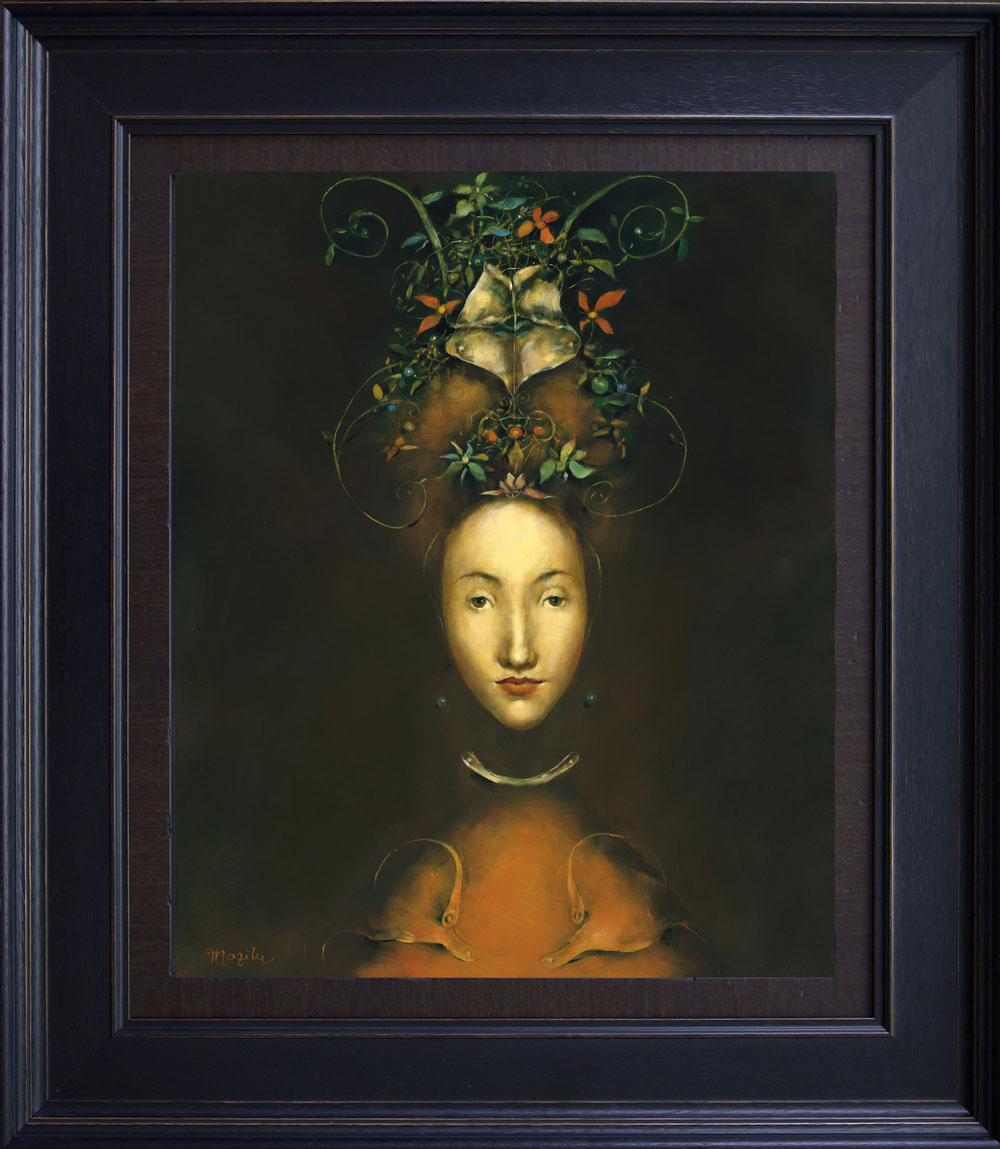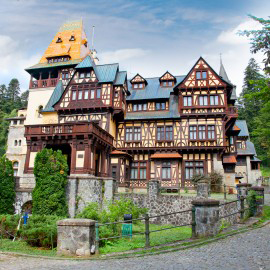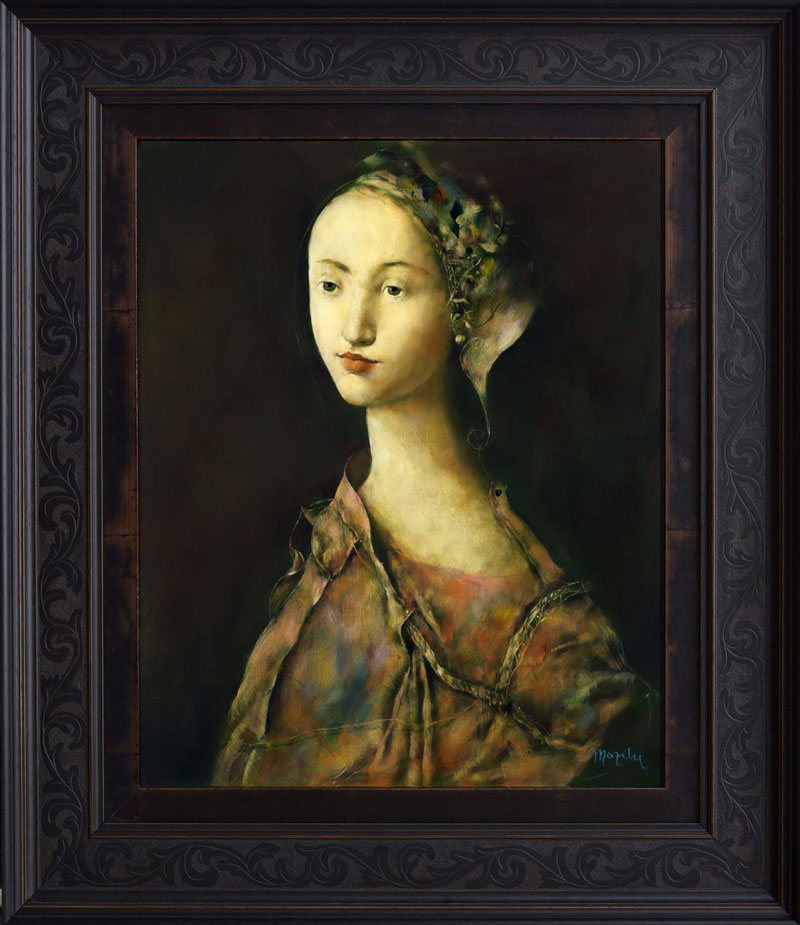
Georges Mazilu, La femme jardin
Georges Mazilu is one of the first artists we represented at Turner Carroll in the early 1990s, after being introduced to his paintings by fellow Romanian artist Traian Alexandru Filip.
Before escaping Romania during the reign of harsh dictator Nicolae Ceausescu, Mazilu had grown up in a beautiful small Medieval village in Romania. In our quest to better understand the mystery and complexity of Mazilu’s paintings, Michael and I travelled to Romania in 1993, to see how this setting had influenced Mazilu’s highly personalized style. Certainly, the amalgamation of scale, color, and shape, on Mazilu’s style was immediately apparent.

Georges Mazilu did the typical multi-year tenure in art school in Romania, with the first several years focusing on realistic depiction of the human figure. Only after mastering the human form, could one declare a specialty in artistic media of choice. Mazilu chose painting, and continued painting the human form and occasional landscape until his escape from Romania in 1982. Art was in service of the State, so he could veer from realism only slightly while living in Romania.
Mazilu fled to France, where he celebrated his new-found artistic freedom by incorporating abstraction into his work, which he had always longed to do. The abstract forms he knew came from the Medieval architecture in his native Romania, as you can see in the images above, as well as the clothing patterns used by his father–a tailor.
La femme jardin, featured above, marks an important evolution of Mazilu’s artistic style, with all the flourishes of a quintessential Mazilu work. This painting, though, offers something additional–it places Mazilu undeniably within the European tradition of timeless master painters. His references to European artists who have informed his work are obvious in the glistening earrings (Vermeer), the melancholy light tones of Rembrandt, and the ornately floral head piece (Arcimboldo). The patterned attire is definitively Mazilu’s, stemming from his upbringing in rural Romania in a household of tailors. The mystery of the work, combined with the other-worldly composition reminds us of Bosch. The confident gaze and compact body shape references Velazquez’s Las Meninas.

Georges Mazilu, Femme en robe rouge
In Femme en robe rouge and La femme au chapeau de soie, one can envision these figures walking through the streets of Mazilu’s home village, at dusk. The pieced-together garments and quirky Medieval feel of these paintings make them timeless and evocative of memories buried deep in European ancestral past. The Femme en robe rouge is a Madonna, or a Medici. La femme au chapeau de soie, with her hat and harlequin-patterned cloak, alludes to the harlequin’s long past in European Tarot and art history.

Georges Mazilu, La femme au chapeau de soie
Noted art historian and Professor Emeritus of Princeton University, Sam Hunter, wrote the most recent monograph on Mazilu, but preeminent South African writer Andre Brink describes Mazilu’s work most poetically:
“Faces luminous as moons, shining not with reflected light but from the inside. Figures that hesitate on the threshold of the subtly coloured backgrounds from which they have emerged and towards which they seem ready to return. The dialogue with the dark. The dialogue with light. The dialogue with the interminable silence of things….A dialogue, too…with a procession from the past: with Bosch, sometimes Brueghel, the fantastic imagery of the Middle Ages…with creatures from hallucinations or from A Midsummer Night’s Dream….”
“Mazilu’s originality, even when he mockingly inserts himself in an admirable and exciting tradition, lies in moving beyond what has been done, in painting precisely what Bosch or Redon or Dali have not imagined. This is the challenge to which each picture responds, each constituting a ludic leap of the imagination, or of faith, into the dark of the as yet unimaginable: it is this motion towards ‘something beyond,’ this act of ‘crossing over,’ of defying limits and boundaries, that defines the…dynamism, of an art that dazzles as much through its technical virtuosity as the subtlety and outrage of its imagination.”
